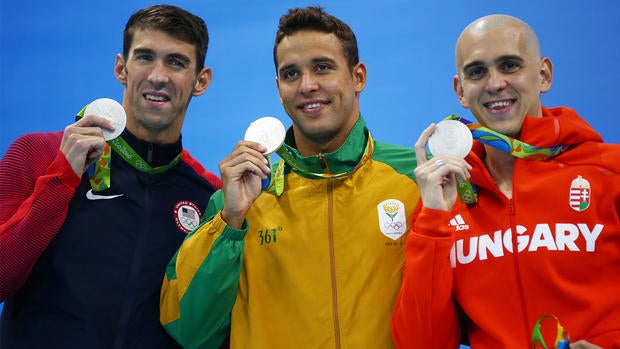Rio Olympics: Here's the reason why there are so many ties in swimming
Many casual swimming fans were probably perplexed on Friday night when Michael Phelps finished in a three-way tie for silver in the 100-meter butterfly — his final individual race of the 2016 Rio Olympics and, most likely, ever.
Just the night before, American Simone Manuel tied for gold in the 100-meter freestyle with 16-year-old Canadian Penny Oleksiak.
So why are there so many ties in swimming?

The reason, in short, is because the timing only goes to hundredths of a second, rather than thousandths of a second or a measurement even more precise.
But the reason why they only go to hundredths of a second, Deadspin explained, is much more complicated:
In a 50 meter Olympic pool, at the current men’s world record 50m pace, a thousandth-of-a-second constitutes 2.39 millimeters of travel. FINA pool dimension regulations allow a tolerance of 3 centimeters in each lane, more than ten times that amount. Could you time swimmers to a thousandth-of-a-second? Sure, but you couldn’t guarantee the winning swimmer didn’t have a thousandth-of-a-second-shorter course to swim. (Attempting to construct a concrete pool to any tighter a tolerance is nearly impossible; the effective length of a pool can change depending on the ambient temperature, the water temperature, and even whether or not there are people in the pool itself.)
So basically because of the margin of error in pool construction standards, there is no way to guarantee that the person in the lane next to you is starting at the exact same position you are. So, if timing went to thousandths of a second, the extra three centimeters you had to swim could cost you a gold medal.
Is it kind of anticlimactic to see swimmers tie on the Olympics stage? Sure.
But it’s actually the only way to ensure a level playing field.